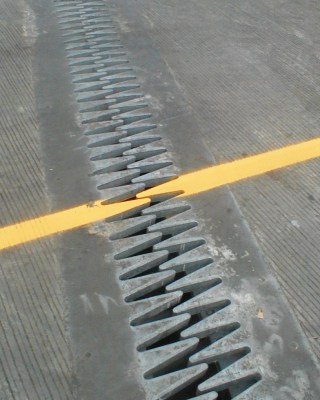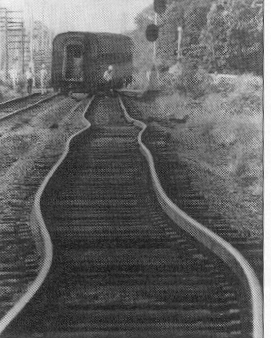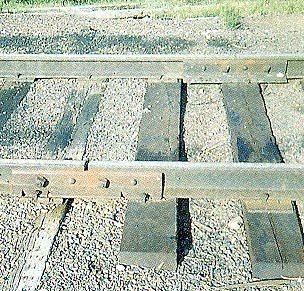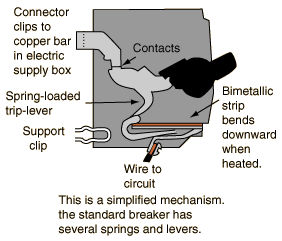Thermal Expansion
INTRODUCTION
Most materials expand slightly when they get hotter. Normally, you don't notice this expansion, because the length or volume of an object usually changes by far less than 1%. Nevertheless, hot wires are a little bit longer, and hot liquid takes up a little more volume, than when they are at a lower temperature. When these materials are cooled again, they shrink back to their original lengths and volumes.
Different materials will expand different amounts for the same change in temperature. For example, aluminum expands more than twice as much as iron or steel does.
Although the amount of expansion is usually a small percentage, the effects of thermal expansion are nonetheless important. Engineers have to design machines and structures so thermal expansion doesn't cause problems. Clever design can also make thermal expansion downright useful. Here are some examples:
Expansion gaps and joints. Roads, bridges and tracks expand on hot days. If engineers don't take that into account, the surface can buckle when it expands, if there is no "slack" anywhere. One way to allow the surface to expand is to use expansion joints or gaps between segments of the surface. Look for these the next time you drive over a bridge or overpass.
Lightbulb filaments. Have you ever had a lightbulb burn out with a "pop" sound, just when you turn it on? Why does that happen? You guessed it — thermal expansion! When you flick on the switch, electricity surges through the filament, heating it very fast and causing it to glow. The heating also causes the filament to expand. Usually, that's not a problem, but after long use the filament becomes thin and quite brittle. Eventually, when the switch is turned on, the filament heats up, it expands, and the filament breaks.
Thermal Stress. If you pour hot coffee into a regular glass, the glass will likely crack. The portion of the glass in contact with the coffee will expand, but the rest of the glass doesn't. With only part of the glass expanding, stresses will build up in the glass, causing it to crack or shatter.
Bimetallic strips. As noted above, different materials expand differing amounts when heated. As an example, brass expands nearly twice as much as steel. If you take a straight strip of brass and bond it to a an strip of steel, you will have what is called a bimetalic strip. When heated, the brass side will expand more than the steel side, and so the entire strip will curve, with the brass on the outside of the curve. Bimetalic strips are used in...
How does a toaster know when the toast is brown? It doesn't! Instead, a bimetalic strip acts as a thermometer which releasing a compressed spring when it gets hot enough, popping up the toast. How did the spring get compressed? When you pushed down on the lever that lowered the toast and started the heating coils.
A circuit breaker (diagram to left) is an electrical switch that turns itself off when too much electricity flows through it. How does it know? The electrical current flows through a bimetalic strip, which warms up more the more current there is. If enough current flow through it, the bimetalic strip trips a spring-loaded lever, opening the circuit and stopping the current.
Fillings. The materials used to fill tooth cavities expands and contracts as its temperature changes, as does the tooth itself. If they expand different amounts — when you drink hot cocoa, for example — the filling can work loose or cause toothaches.
to do as you read





